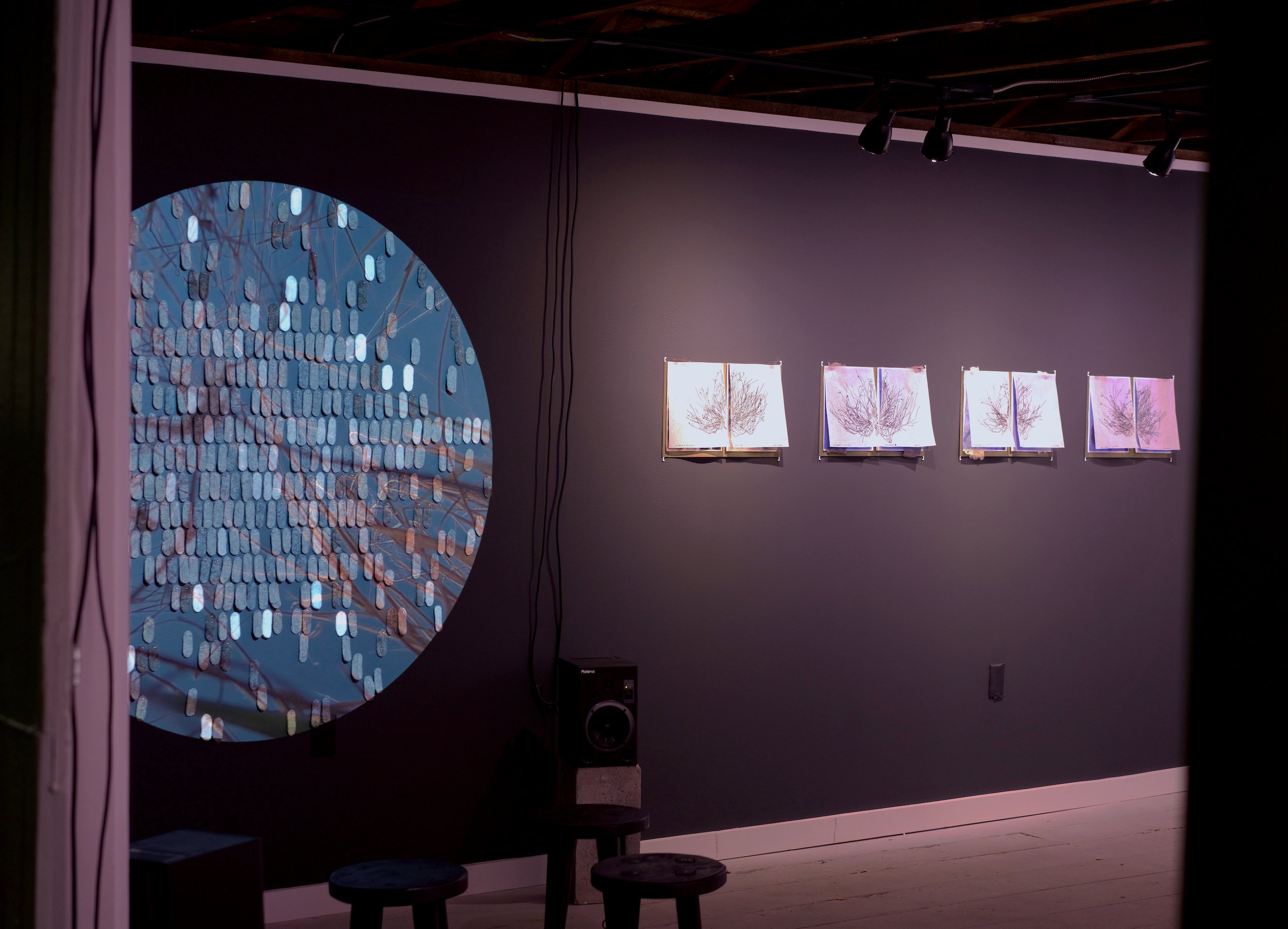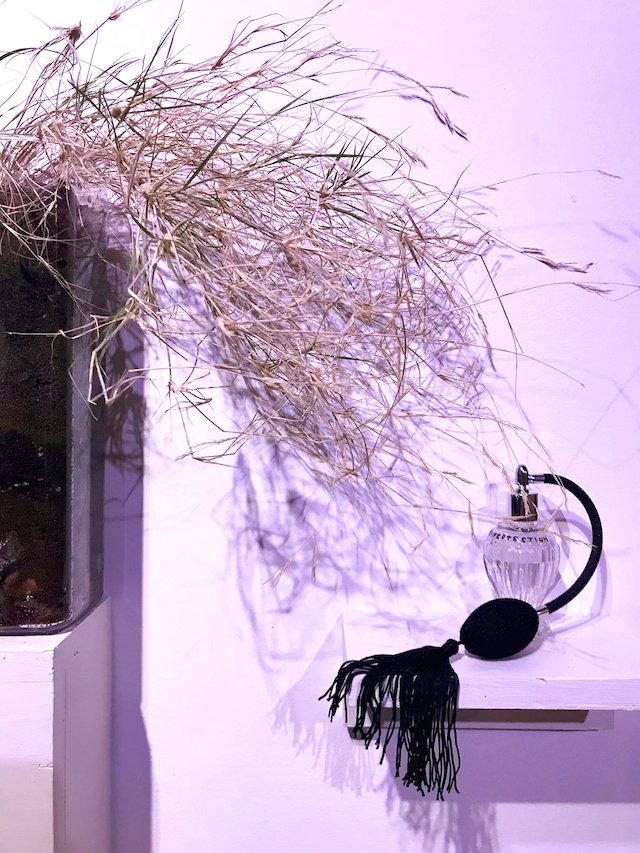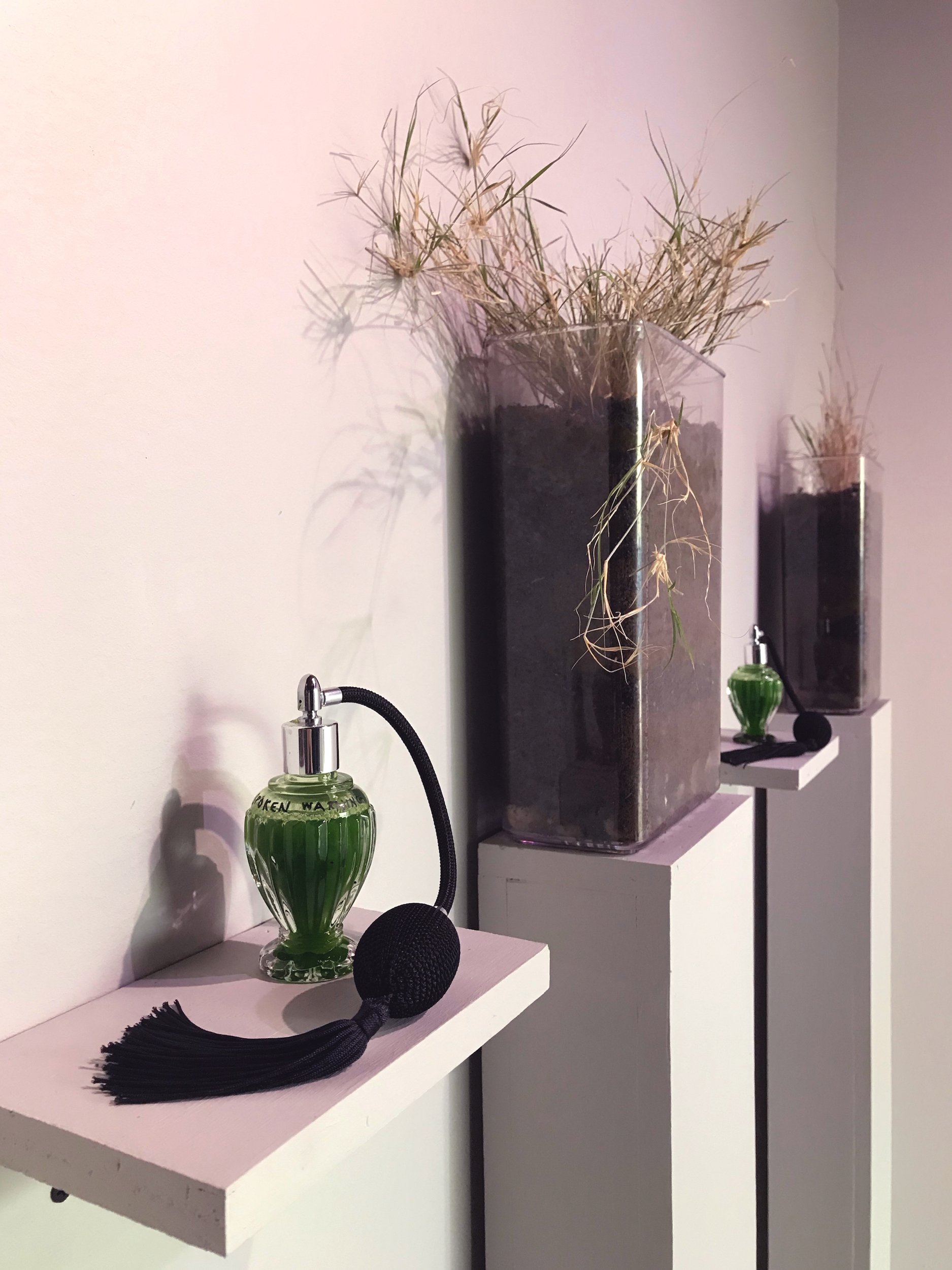a quiet but not empty place










a quiet but not empty place
In between the bosque and the mountains, the current day city of Albuquerque, resting on Tiwa land, sits in a high-elevation arid grassland. It might not look like grass to us—it doesn’t look like a lawn; it might not even look green most of the year. But the golden and straw-colored plants of this arid grassland are the co-creators of place—alive and dynamic, they hold the soil together—along with microbial partners—to provide a matrix for other plant, animal, and human life.
The grasses’ perception and communication strategies differ from ours—where we human animals focus on audible vocalizations or written glyphs to exchange information and affect, the grasses instead use inaudible but effective root- and wind-based communications. These non-verbal languages are an example of models of cognition, communication, thinking and being in other-than-human organisms that exist constantly around us but which are often belittled, ignored, rejected, or unrecognized.
The grasslands of Albuquerque are quiet, but not empty, places—landscapes that we may not see as active or vibrant, but which are teeming with the ongoing dynamics of life. The home of Albuquerque and the home of grass speak to, with, and around each other. I hope that an expanded notion of domesticity, of listening to our neighbors and friends—including human, grass, and other lives—can help us to learn from, recognize our reciprocity with, and give to the places we inhabit.
Silence may be considered as peace, but the assumption of silence is often an erasure, an omission. This work emphasizes the active communication practices and daily lives of plants and grasslands, providing a space for each of us to step lightly to the side of our usual concerns, to connect human perception to plant perception, and to consider our entanglement in this place. The works encompassing a quiet but not empty place emphasize that we can listen to grasslands to recognize the voices that whisper in the quiet, opening space for unheard narratives in our entangled, everyday lives.
artworks pictured
A Day in the Grass. 42:00 looping video and 3-channel audio. 9’ x 9’ x 9’ as installed. Field-recorded video and sound, wooden stools, speakers, concrete blocks, projector, audio interface, pins, hand-felted wool from grassland grazers locally and globally: sheep raised in New Mexico (Churro, Corriedale, Rambouillet), sheep raised on my family’s farm (Targhee mix), Alpaca, and Yak. 2020.
12th and Tijeras (Waxing Crescent to Waxing Crescent). Seven wall-mounted multilayered dossiers. 17” x 12” each, 16’ x 12” as installed. File folders, hand-felted wool from New Mexico (Churro, Corriedale) and family farm sheep (Targhee mix), photo transparencies, glassine, acrylic pen, staples, and found hand-typed manuscript of A Checklist of Gymnosperms and Angiosperms of New Mexico by William C. Martin and Edward F. Castetter, published privately in 1970. 2020.
Spoken Warning. 7’x7’. Soil from Albuquerque’s North Valley and South Valley, home compost, landscaping gravel, repurposed tupperware containers, Pine wood, acrylic paint, acrylic pen, screws, Galleta grass, Alkali Sacaton grass, Black Grama grass, Sideoats Grama grass, Sand Dropseed grass, algae, endophytic fungal symbionts in grass roots, soil microbes, Rio Grande and San Juan/Chama water, Wheatgrass, atomizer bottles.
Informed Protection. 7’x7’. Soil from Albuquerque’s North Valley and South Valley, home compost, landscaping gravel, repurposed tupperware containers, Pine wood, acrylic paint, acrylic pen, screws, Blue Grama grass, Galleta grass, Sand Dropseed grass, Black grama grass, algae, endophytic fungal symbionts in grass roots, soil microbes, Rio Grande and San Juan/Chama water, distilled water, rubbing alcohol, jasmine essential oil, atomizer bottles. 2020.
Flag Waving. Variable as installed. Action score, neighborhood walk and flag installation; Linen, bamboo, PVA glue, acrylic pen, Pine wood, screws, pens, pencils, action. 2020.